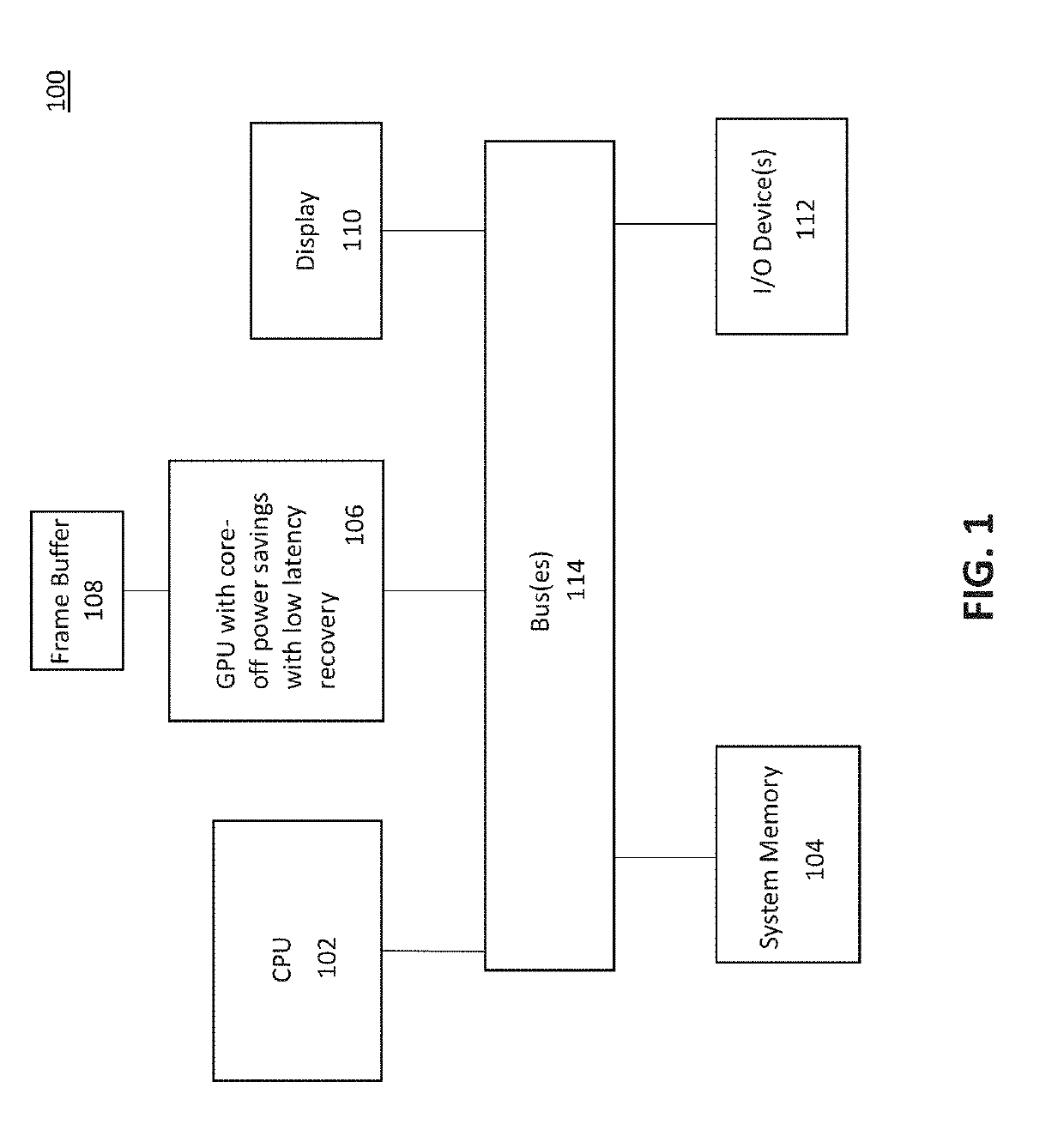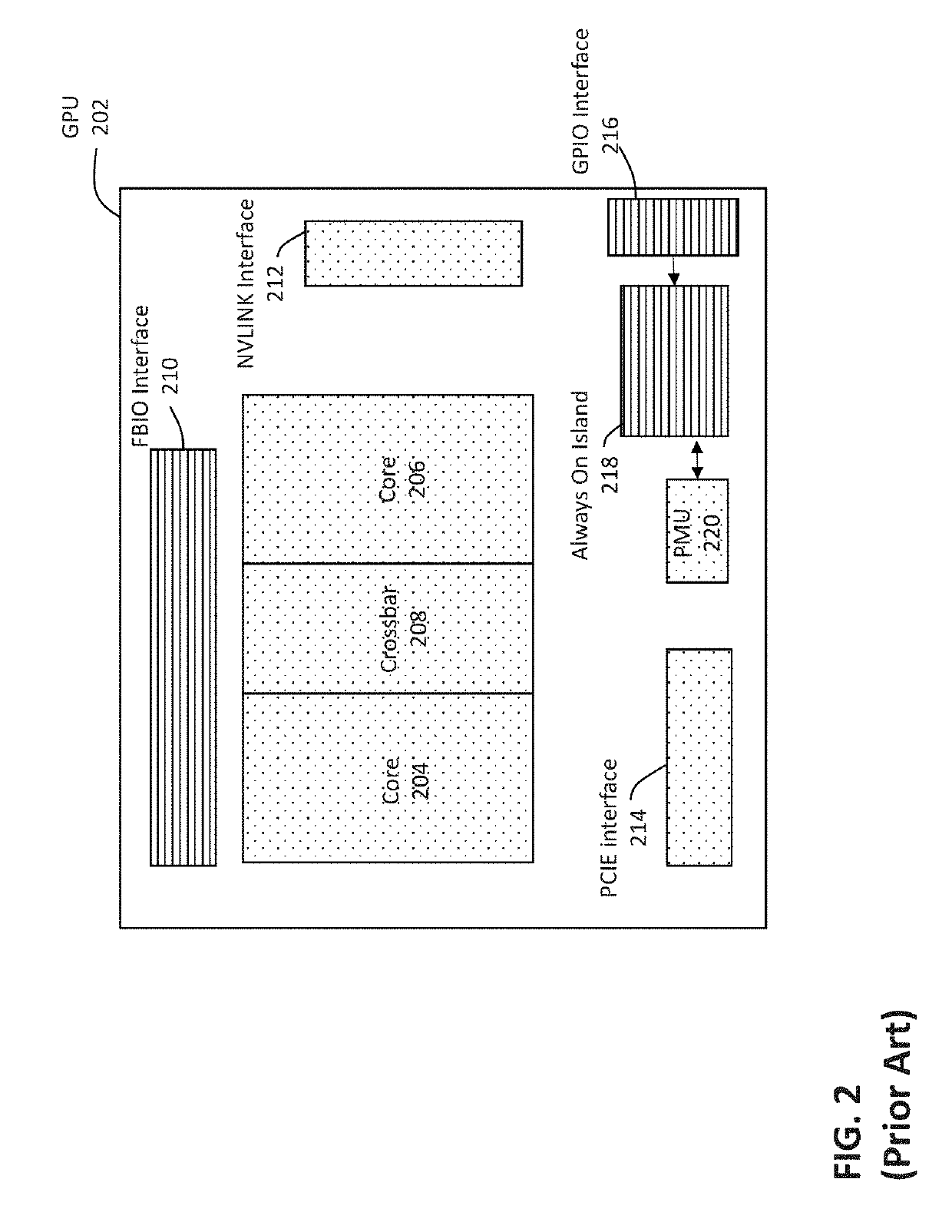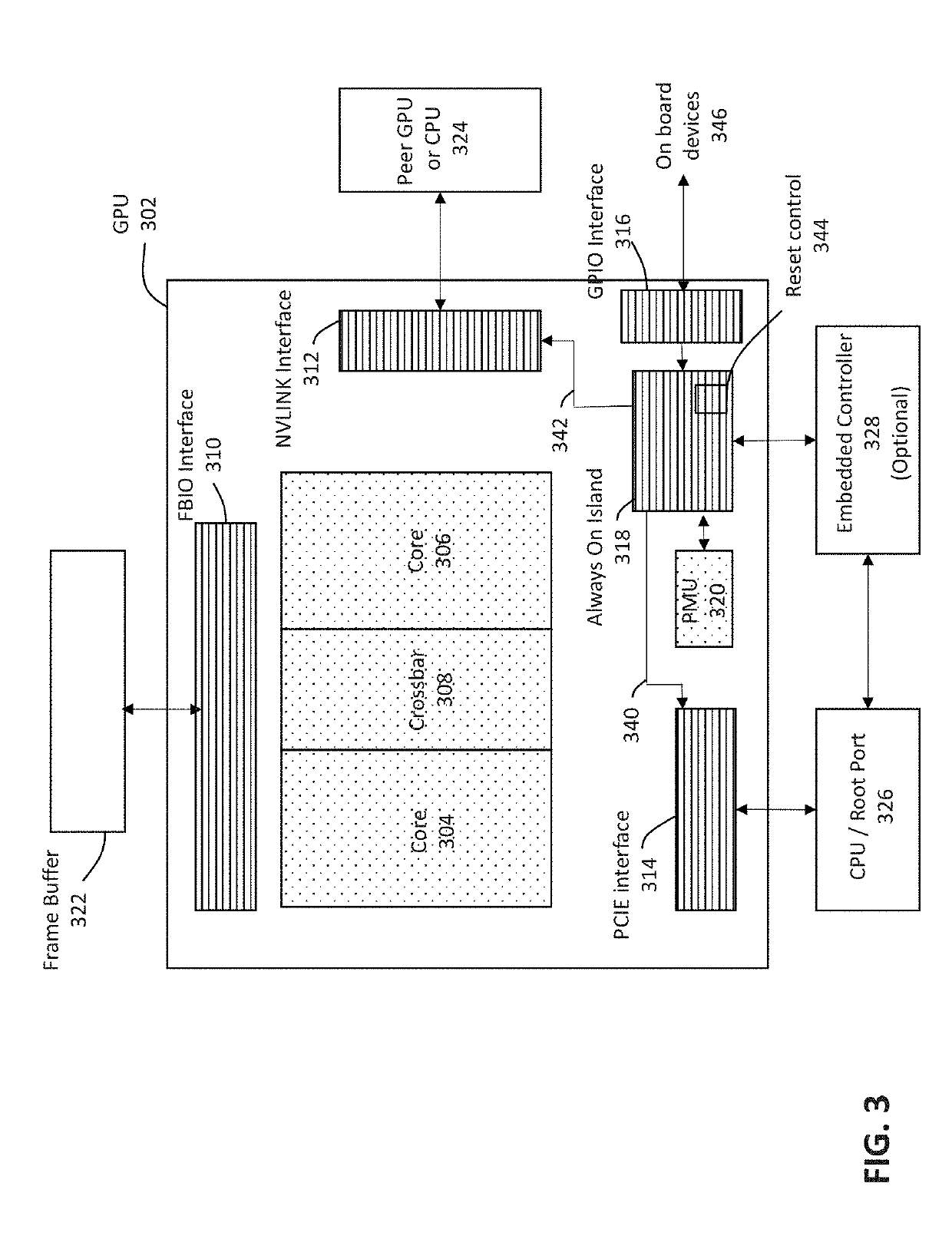Core off sleep mode with low exit latency
a technology of exit latency and sleep mode, applied in the field of power saving in computer systems, can solve the problems of reducing the power consumed by computer systems and various other electronic devices, affecting the usability of the computer system, and the processor may become idle at any time, so as to reduce idle power consumption, increase complexity and capability, and accelerate the effect of ra
- Summary
- Abstract
- Description
- Claims
- Application Information
AI Technical Summary
Benefits of technology
Problems solved by technology
Method used
Image
Examples
Embodiment Construction
[0030]Example embodiments provide for reducing power consumed by a processor in an idle state, in a manner that enables quick reactivation of the processor. The reactivation of the processor, in certain example embodiments involving a GPU, is performed with such low latency that improved power savings are obtained by putting the GPU into a sleep mode with the core(s) powered off in between interactive display events such as, for example, successive blinks of a cursor on a display, successive keyboard strokes, and other user-perceivable events. The capability to turn the core(s) off and back on again for such short durations between frequently occurring events (e.g., flashes of the cursor) may provide for achieving significantly reduced power consumption than currently available techniques, without detrimentally affecting the user experience. The events in between which a GPU can be put into a sleep mode according to example embodiments are not limited to interactive events, and may ...
PUM
 Login to View More
Login to View More Abstract
Description
Claims
Application Information
 Login to View More
Login to View More - R&D
- Intellectual Property
- Life Sciences
- Materials
- Tech Scout
- Unparalleled Data Quality
- Higher Quality Content
- 60% Fewer Hallucinations
Browse by: Latest US Patents, China's latest patents, Technical Efficacy Thesaurus, Application Domain, Technology Topic, Popular Technical Reports.
© 2025 PatSnap. All rights reserved.Legal|Privacy policy|Modern Slavery Act Transparency Statement|Sitemap|About US| Contact US: help@patsnap.com



